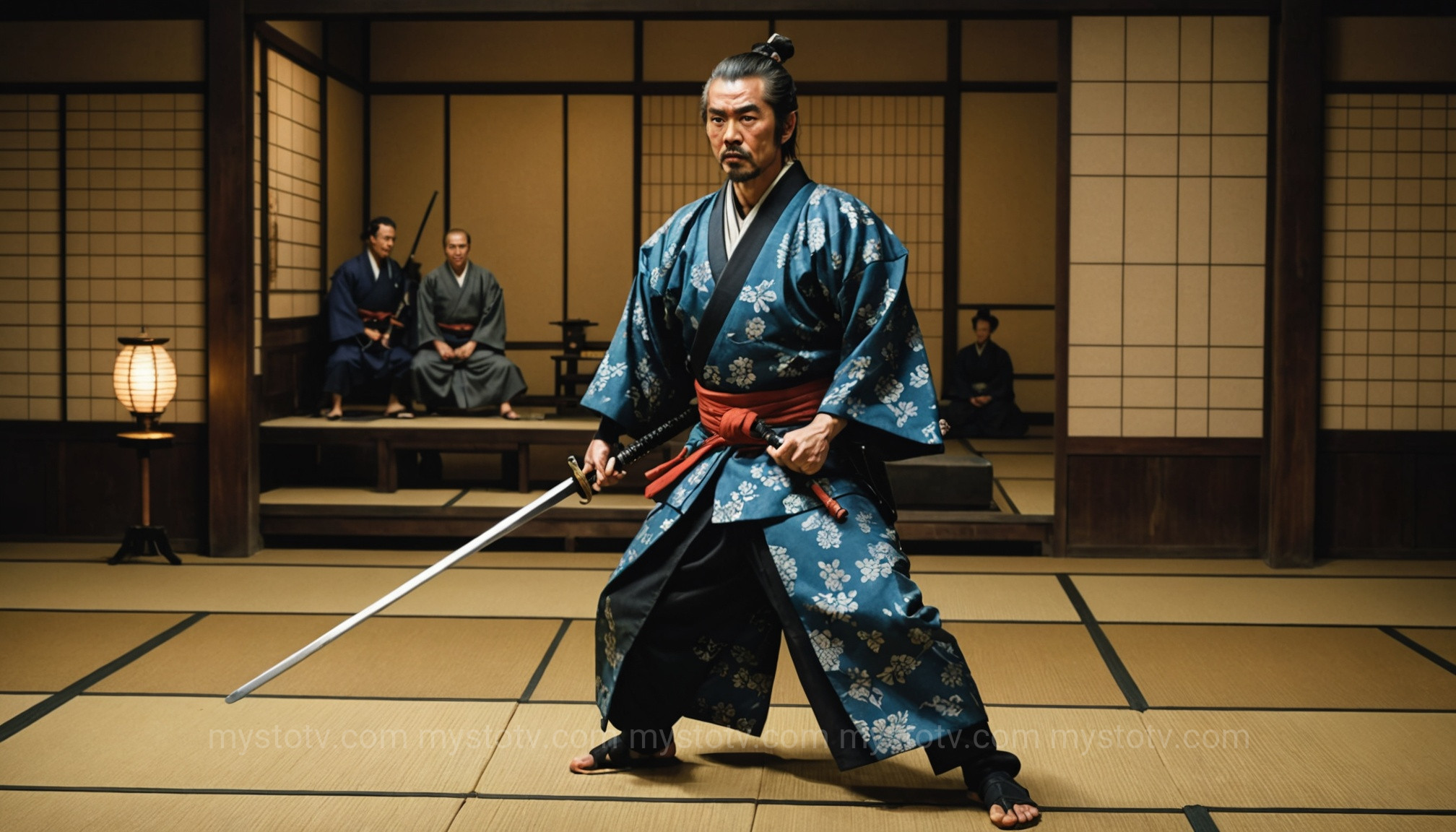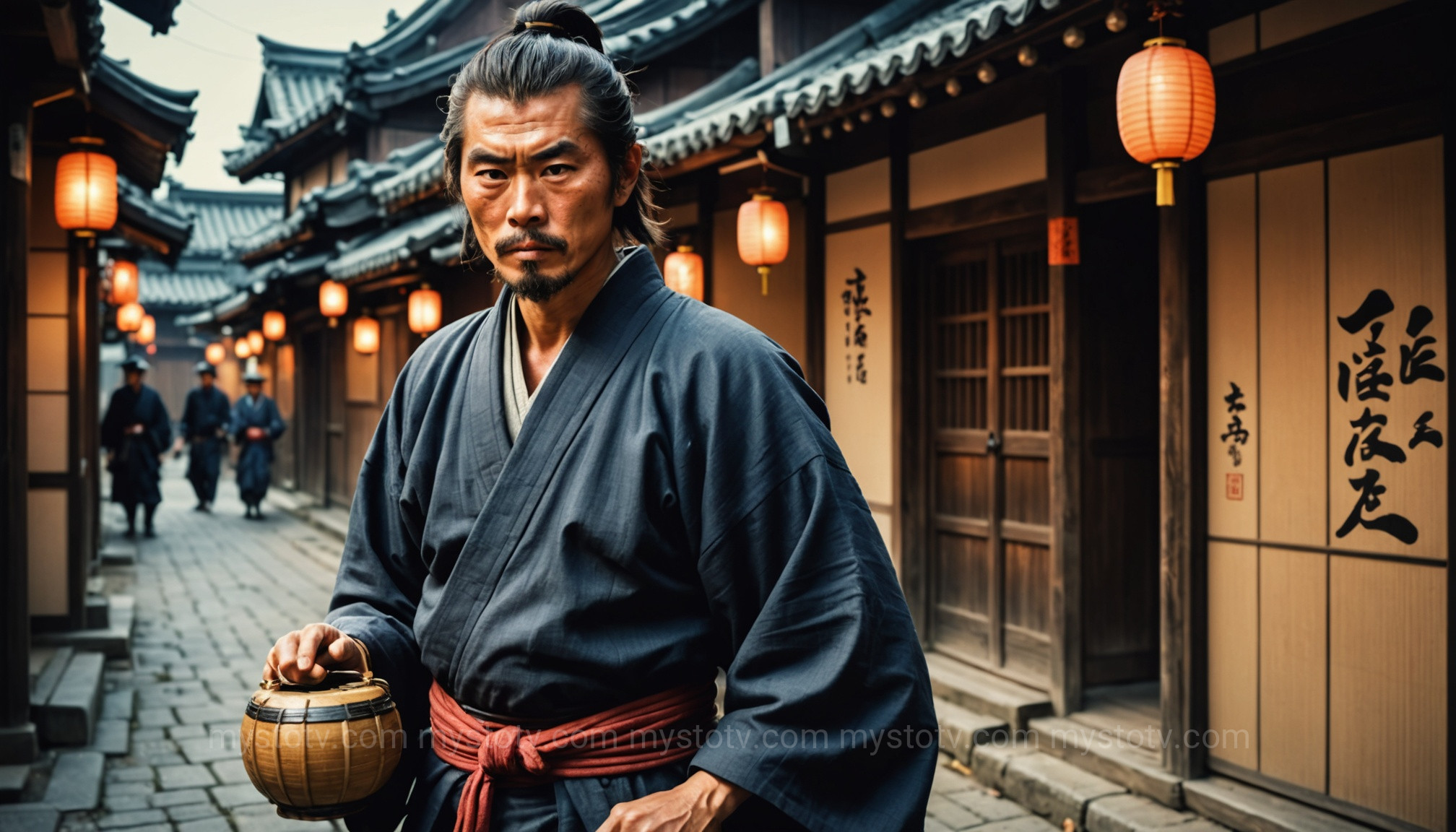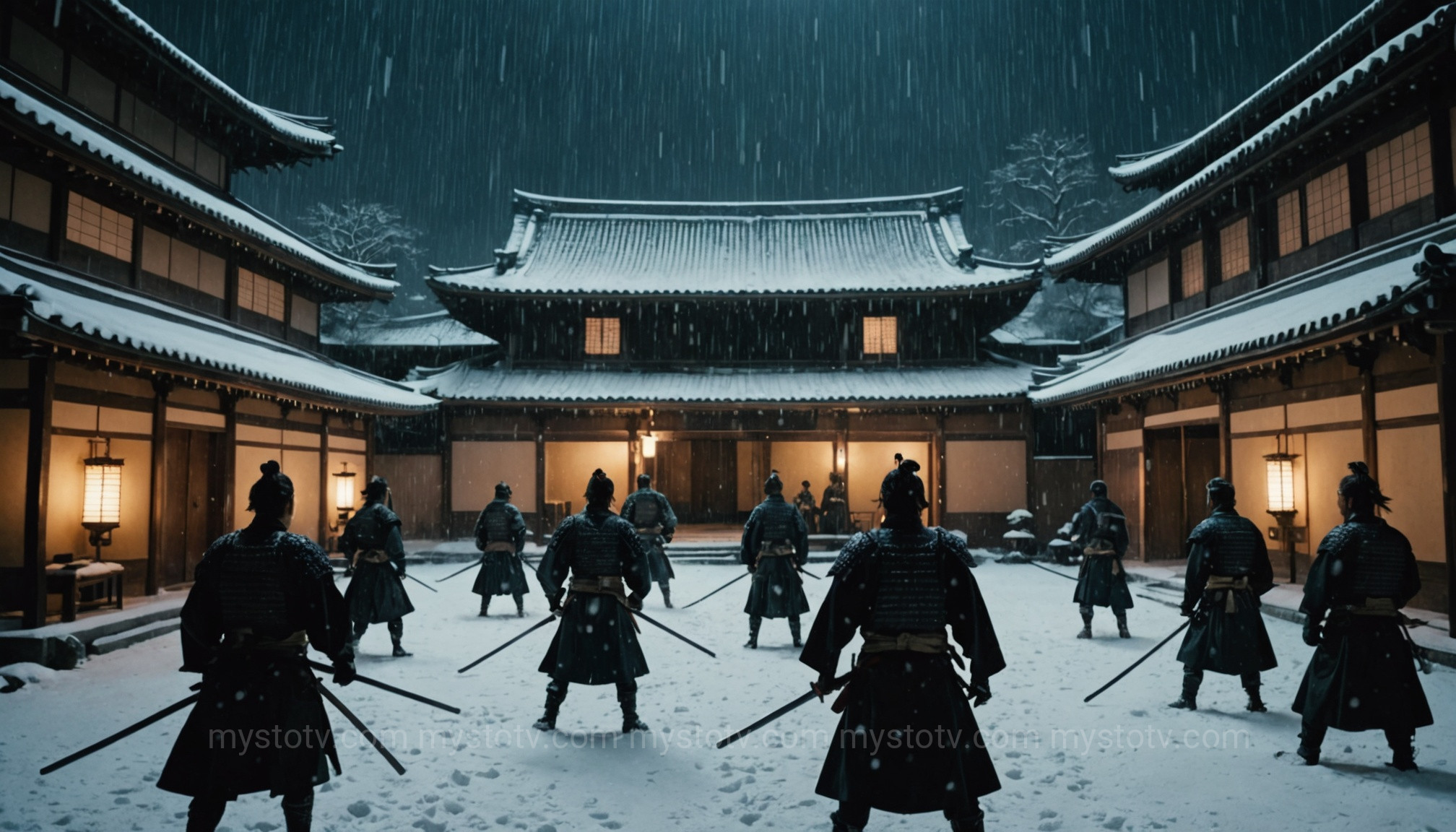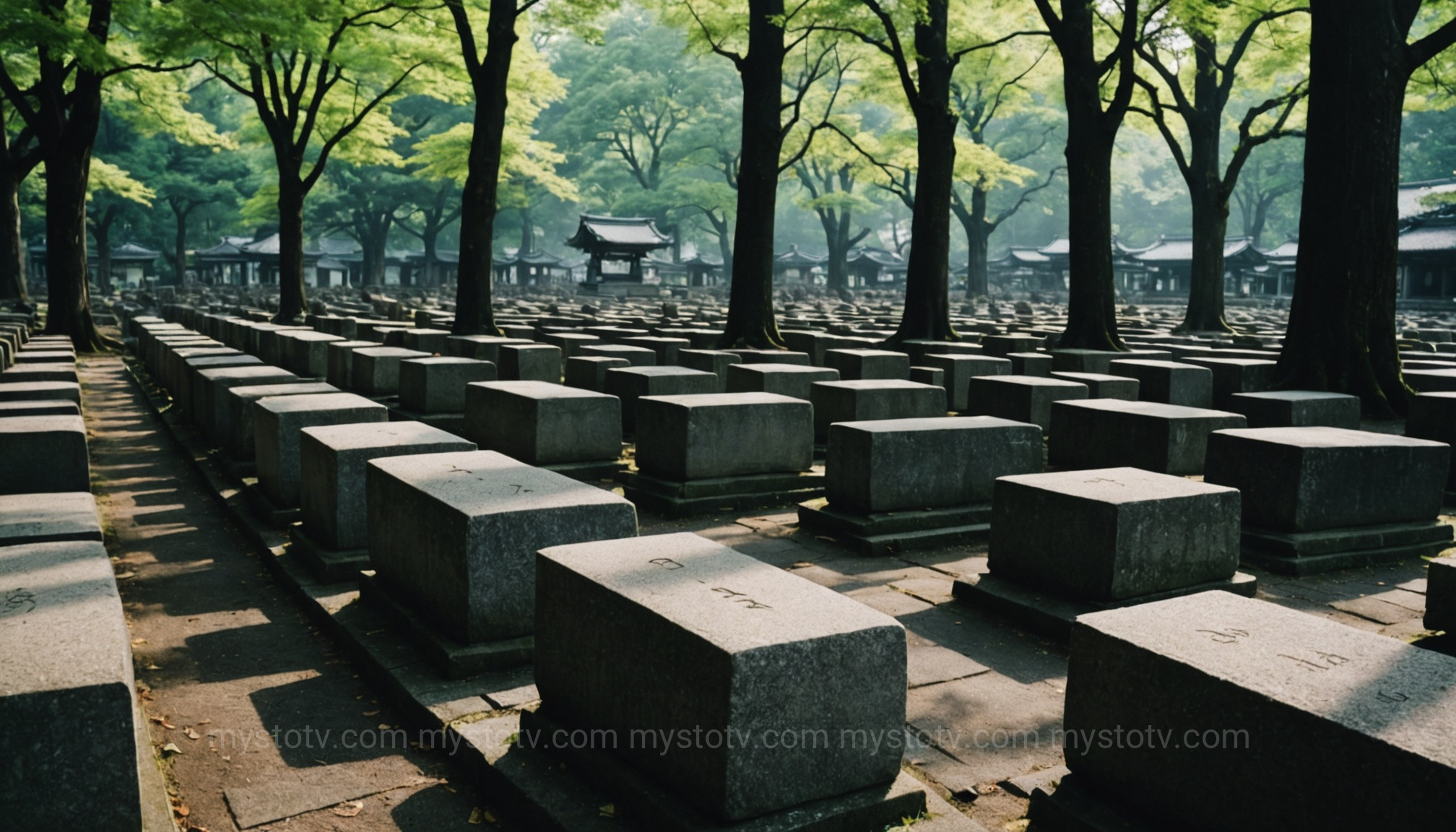The first time I stood before the 47 graves at Sengaku-ji temple in Tokyo, the air was thick with the scent of incense and an almost palpable sense of history. It wasn't just a tourist site; it was a testament to a code of honor that feels almost alien in the modern world. Surrounded by the quiet reverence of visitors, I understood that the 47 ronin story is more than a simple tale of revenge. It’s a profound, real-world saga of loyalty, sacrifice, and the complex nature of justice that has resonated for centuries. This experience moved beyond the dramatic film adaptations, grounding the legend in a tangible reality that continues to challenge and inspire. The raw power of the historical 47 ronin story lies in its unwavering commitment to a principle, even in the face of certain death.
Contents
The Spark of Conflict: Unpacking the Origins of the 47 Ronin Story

The legendary 47 ronin story, known in Japan as the Genroku Akō jiken, is not a myth but a historical event that occurred in the early 18th century. Its roots lie not in a grand battle, but in a personal conflict steeped in the rigid etiquette and power dynamics of the Tokugawa shogunate. The entire saga was set in motion by a clash of personalities and a perceived grave insult within the walls of Edo Castle.
The Insult in the Shogun's Court
The central figures at the story's inception were Lord Asano Naganori, the young daimyō (feudal lord) of the Akō Domain, and Kira Yoshinaka, a powerful and high-ranking master of court ceremony. In 1701, Lord Asano was tasked with organizing a reception for imperial envoys at the shogun's court in Edo (modern-day Tokyo). As he was inexperienced in the intricate court protocols, he was expected to receive instruction from Kira.
Historical accounts suggest that Kira was arrogant and corrupt, expecting bribes for his tutelage—a common, albeit unsaid, practice. Asano, a stern follower of Confucian principles, either refused to pay what Kira demanded or offered a gift deemed insufficient. In response, Kira relentlessly humiliated Asano, publicly insulting him and treating him with contempt. This wasn't merely rude behavior; in the honor-bound culture of samurai, it was a profound attack on Asano's character and his clan's reputation.
Lord Asano's Fateful Reaction
The breaking point came on the final day of the reception. After another sharp insult from Kira, Lord Asano's restraint snapped. He drew his wakizashi (short sword) and attacked Kira, wounding him on the face and shoulder before being restrained. The act itself was a catastrophic breach of protocol. The drawing of a weapon within Edo Castle was a capital offense, regardless of the provocation.
The shogunate's judgment was swift and severe. Lord Asano was ordered to commit seppuku—ritual suicide—that very day. His domain was confiscated, his family disinherited, and his samurai retainers were ordered to disband, thus becoming rōnin: masterless samurai. In stark contrast, Kira Yoshinaka faced no punishment whatsoever. This gross imbalance of justice was the catalyst for everything that followed. For Asano's retainers, the shogun's verdict was not an end but a beginning; it laid the foundation for one of the most famous acts of vengeance in the history of the 47 ronin story.
A Vow of Vengeance: The Ronin's Secret Plot in the 47 Ronin Story

With their lord dead and their honor in tatters, the samurai of the Akō domain were faced with a choice. They could accept their fate and fade into obscurity, or they could seek justice for their master. Under the leadership of Ōishi Kuranosuke, Asano's principal councilor, a core group of loyal retainers secretly pledged to avenge their lord, fully aware that this path would lead to their own deaths. This phase of the 47 ronin story is a masterclass in patience, strategy, and unwavering resolve.
Oishi Kuranosuke's Masterful Deception
Ōishi understood that Kira and the shogunate's spies would be watching them closely. Any hint of a revenge plot would be swiftly crushed. To lull their enemies into a false sense of security, Ōishi orchestrated a brilliant campaign of misinformation. He moved to Kyoto and began a new life of apparent debauchery, frequenting brothels and taverns. He divorced his loyal wife and publicly shamed himself, acting the part of a broken man with no honor left.
His performance was so convincing that at one point, a samurai from the Satsuma domain stumbled upon Ōishi passed out drunk in the street and spat on him, disgusted by his cowardice. The other ronin likewise dispersed, taking up menial jobs as merchants and craftsmen, hiding their weapons and biding their time. This period of deception lasted for nearly two years, a profound test of their commitment to the core mission of the 47 ronin story.
Gathering the Loyal Samurai
While publicly disgraced, Ōishi was secretly coordinating the conspiracy. He used couriers to communicate with his most trusted men, who were carefully vetting the other retainers to see who remained truly loyal. Out of over 300 samurai, only a small, dedicated band of 47 (the number varies slightly in some accounts) held fast to the secret oath. They smuggled weapons and armor into Edo, meticulously mapping out Kira's mansion and gathering intelligence on his household guards. Their planning was patient and precise, ensuring that when the time came, their attack would be successful and, most importantly, honorable. They were not common assassins; they were samurai performing a final, righteous duty for their master.
The Night of the Attack: The Climax of the 47 Ronin Story

After almost two years of patient waiting and meticulous planning, the moment for retribution arrived. On a snowy night in the 14th day of the 12th month of 1702, Ōishi Kuranosuke and his 46 comrades assembled to enact the final, violent chapter of the 47 ronin story. This carefully executed raid on Kira Yoshinaka's mansion in Edo is the dramatic heart of the legend, a testament to their martial skill and strategic brilliance.
The Winter Raid on Kira's Mansion
Divided into two groups, the ronin launched a synchronized attack on Kira's residence. One group, led by Ōishi, assaulted the front gate, while the other, led by his son Ōishi Chikara, entered through the rear. They were equipped with homemade armor and a variety of weapons, and they moved with the discipline of a well-trained military unit. To avoid harming innocents, they sent a messenger to the neighboring houses, announcing that they were not robbers but samurai seeking to avenge their master.
The battle within the mansion was fierce. Kira's retainers, though caught by surprise, fought back bravely. The ronin, however, were driven by a singular purpose. They systematically overcame the resistance, suffering only a few minor injuries while killing several of Kira's guards. Their primary objective was not slaughter, but to find one man.
Justice for a Fallen Master
After a frantic search, the ronin found Kira Yoshinaka hiding in an outbuilding, cowering with his female servants. They identified him by the distinctive scar on his face, left by Asano's attack. Ōishi respectfully addressed Kira, explaining the reason for their intrusion and offering him the honorable death of a samurai: seppuku, using the very same dagger with which Lord Asano had taken his own life. When Kira refused in terror, the ronin held him down and Ōishi beheaded him.
Their mission complete, the ronin extinguished all the fires in the mansion to prevent a larger conflagration. They then took Kira's head and marched across the city of Edo to Sengaku-ji temple, the final resting place of their master, Lord Asano. There, they washed Kira's head in a well and placed it as an offering on Asano's grave, announcing that their quest for justice was complete. This act cemented the moral purpose behind their violent raid. Their subsequent fate would define the legacy of the 47 ronin story.
Honor and Sacrifice: The Aftermath and Legacy of the 47 Ronin Story

Having achieved their revenge, the ronin did not flee. They calmly turned themselves in to the authorities, fully expecting to be executed. Their actions presented the Tokugawa shogunate with a complex legal and ethical problem. The final chapter of the 47 ronin story is not one of battle, but of philosophical debate and the establishment of an enduring national legend.
The Shogunate's Dilemma
The ronin had committed a grave crime. They had defied the shogun's authority by carrying out a private vendetta and had illegally conspired and murdered a high official. By the letter of the law, they were common criminals who should be executed ignominiously. However, public opinion was overwhelmingly on their side. The populace saw their actions not as murder, but as a righteous fulfillment of the code of bushidō—specifically, the virtue of chūgi (loyalty). They had upheld their honor and avenged their wrongly condemned master.
The shogunate debated their fate for weeks. Executing them as criminals would be unpopular and seen as a betrayal of samurai values. Pardoning them, however, would undermine the rule of law. In the end, a compromise was reached. The shogun, in a gesture of respect, allowed the ronin to die with honor. On February 4, 1703, the 46 surviving ronin (one had been sent as a messenger and was later pardoned) committed seppuku.
The Enduring Legend in Japanese Culture
The ronin were buried at Sengaku-ji temple, alongside their master, Lord Asano. Their graves immediately became a site of pilgrimage, and they were venerated as heroes. The 47 ronin story was quickly immortalized in popular culture, most famously through bunraku (puppet theater) and kabuki plays, collectively known as Chūshingura ("The Treasury of Loyal Retainers").
The tale's enduring power lies in its exploration of the conflict between giri (duty) and ninjō (human emotion), and its idealization of loyalty, honor, and self-sacrifice. It became a foundational story for Japanese identity, reinforcing the principles of the samurai code long after the samurai class itself had vanished. Today, the 47 ronin story remains a powerful symbol of ultimate loyalty, a historical event that has transcended time to become a timeless legend of honor.
Frequently Asked Questions about the 47 Ronin Story
Is the 47 Ronin story real?
Yes, the 47 ronin story is based on a real historical event known as the Akō Incident (Akō jiken), which took place from 1701 to 1703. While some details have been dramatized over centuries of retellings in plays and films, the core events—Asano's attack on Kira, his forced seppuku, the ronin's revenge plot, the raid, and their subsequent sentence—are historically accurate.
What does "ronin" mean?
The word rōnin (浪人) literally translates to "wave man." It refers to a samurai who has become masterless, either through the death of his lord, the confiscation of his lord's lands, or by being dismissed. In feudal Japan, being a ronin was a state of disgrace, as a samurai's identity and purpose were tied directly to his service to a master.
Where are the 47 ronin buried?
The 46 ronin who committed seppuku, along with their master, Lord Asano Naganori, are buried in the graveyard of Sengaku-ji temple in Minato, Tokyo. The 47th ronin, Terasaka Kichiemon, who was either ordered to leave before the final surrender or was pardoned, is also buried there after living to an old age. The site remains a popular and deeply respected place of pilgrimage today.
The tale of the loyal samurai of Akō is far more than a simple revenge narrative. The 47 ronin story is a cornerstone of Japanese culture that embodies the profound ideals of the bushido code. It explores the tension between personal honor and state law, duty and survival. The unwavering loyalty of Ōishi Kuranosuke and his men, their meticulous planning, and their ultimate sacrifice created a legend that has captivated audiences for over 300 years, serving as a timeless reminder of the power of conviction and the high price of honor.
References
- Turnbull, Stephen. The Revenge of the 47 Ronin: Edo 1703. Osprey Publishing, 2011.
- Sansom, George. A History of Japan, 1615-1867. Stanford University Press, 1963.
- The Editors of Encyclopaedia Britannica. "47 ronin". Encyclopædia Britannica, 20 Jul. 1998. https://www.britannica.com/event/47-ronin
- Sengaku-ji Temple Official Website. "Akogishi". http://www.sengakuji.or.jp/about_sengakuji_en/